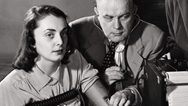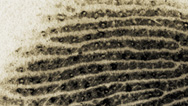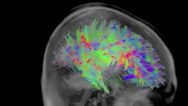Secrets of Lie Detection
- Posted 10.17.12
- NOVA scienceNOW
Can science spot a lie? Many polygraph tests are done every year, although the technique is deeply flawed. Now, scientists are developing new ways to trace the mental origins of lying. David puts the technique to the test and finds out how brainwaves might reveal what some people strive to keep hidden, the decision to deceive.
Transcript
Can Science Stop Crime?
PBS Airdate: October 17, 2012
DAVID MANLEY: Did you plan with anyone to steal that money?
DAVID POGUE: No.
How do you know when criminals are lying?
DAVID MANLEY: Did you enter room M1 today?
DAVID POGUE: No.
What goes on in the brain and the body, when we don't tell the truth?
DAVID MANLEY: Okay. Have you ever been inside room M1?
DAVID POGUE: Yes.
Can science detect the signals?
DAVID MANLEY: Do you plan to try to lie to try to me today?
DAVID POGUE: No.
And catch liars in the act?
The hope that machines can detect lies goes back nearly a century, to the invention of the classic lie detection test: the polygraph.
NITA A. FARAHANY (Duke University): Polygraph is incredibly controversial. People really don't have soft opinions on it. They either think it's great, or they think it is utter hogwash.
DAVID POGUE: So how exactly does this 90-year-old test work? And how trustworthy is it, honestly?
To find out, I've come to the National Center for Credibility Assessment, where the C.I.A. and the F.B.I. train all their lie-detection experts.
You are now in week 12 of your program.
DAVID POGUE: With the center's permission, I'm going to steal cold, hard cash and then lie about it.
You will deny that you stole anything, deny that you know who took it.
DAVID POGUE: So even though this is a mock crime, the polygraph is still going to work?
JIM HEINTZMAN: The polygraph's still going to work. Our examiner does not know whether or not you are guilty or innocent, and that's his job, to figure that out with the polygraph.
DAVID MANLEY: Just have a seat, Dave.
DAVID POGUE: Wait, you're going to put me in the electric chair, already?
DAVID MANLEY: Well, not yet. If you'll…
DAVID POGUE: The whole idea of the polygraph is that lying can cause stress. In that case, my brain would signal my heart and lungs to work faster and harder, and I'd start sweating.
DAVID MANLEY: All right, for the purposes of the test, I need you to uncross your legs, put your feet flat on the floor.
DAVID POGUE: Next door, investigator Keith Gaines watches for these changes in me like a hawk.
KEITH GAINES (National Center for Credibility Assessment): This records respiration. We have sensors on the chest and on the abdomen that pick up the person's respiration during the test. This middle channel is recording perspiration across the surface of his fingers. And then your bottom trace is blood pressure and pulse rate.
DAVID MANLEY: All right, David. What I want to do now is I want to go over the questions with you that are going to be on the test.
DAVID POGUE: Wait what? You're going to tell me the questions before the test?
DAVID MANLEY: Yes.
DAVID POGUE: Well, doesn't that sort of give me an unfair advantage? I know what's coming.
DON KRAPOHL (National Center for Credibility Assessment): The purpose for reviewing the test questions is that we don't want to surprise the examinee with the test questions themselves, because the mere act of surprise can, in fact, cause reactions.
DAVID POGUE: But that's not what we see on TV and in the movies.
EDDIE (The Simpsons/Film Clip): Do you hold a grudge against Montgomery Burns?
MOE (The Simpsons/Film Clip): No. (Buzzer sounds.)
All right maybe a little…
DAVID POGUE: On the screen, questions get asked once and lies are caught right away.
MOE (The Simpsons/Film Clip): Good 'cause I got a hot date tonight. (Buzzer sounds.)
A date. (Buzzer sounds.)
Dinner alone. (Buzzer sounds.)
DAVID POGUE: Not so in the real world.
DON KRAPOHL: What we're very concerned with is reactions that occur with the same test question, repeatedly, over time.
DAVID POGUE: This is the real test?
DAVID MANLEY: This is the real test.
Did you plan with anyone to steal that money?
DAVID POGUE: No.
DAVID MANLEY: Did you steal that money from that wallet?
DAVID POGUE: No.
KEITH GAINES: He's reacting for some reason.
DAVID POGUE: Even though I think I'm doing a great job staying cool and collected, the sensors betray me.
KEITH GAINES: Right here, he was asked, "Did you take that money out of that wallet?"
DAVID POGUE: The yellow line that tracks my sweat response is literally off the chart.
The finger sensors seem to have picked up a small amount of sweat, blowing my cover.
This time, the polygraph looks like it detected my stress and my lies.
NITA FARAHANY: The polygraph is picking up your stress. It's picking up the degree to which you're responding stressfully, or it's difficult for you to make an answer. The idea is, the more you have to work to tell a lie, the more likely the polygraph is to register the difference from the baseline.
DAVID POGUE: But the polygraph doesn't always work with everyone. Some people, like this serial killer, have no trouble lying during a polygraph. They simply don't react the way most of us do.
NITA FARAHANY: Psychopaths don't have those physiological changes when they are lying. The very experience of being interrogated can be very stressful for some and not at all stressful for others.
DAVID POGUE: Innocent people can appear to be lying, even if they're just nervous, and that's one reason several states have banned its use as evidence in court.
So some scientists are trying to find another way, by bypassing the body, and going directly to the brain.
JENNIFER VENDEMIA: We can identify fear pretty readily, but can we identify whether somebody's being deceptive? My goal is to understand what the brain does, while we're deceiving.
DAVID POGUE: Jennifer Vendemia and her team at the University of South Carolina are trying to identify deception at its very source.
All of a sudden, I'm a melon.
And today, the brain going under her microscope is mine.
JENNIFER VENDEMIA: So, what we're going to do is we're going to get a picture of what David's brain looks like when he lies and when he tells the truth.
DAVID POGUE: That picture will come from this net of 128 electrodes.
JENNIFER VENDEMIA: This is the torture part.
DAVID POGUE: Each one picks up tiny electrical impulses coming from my brain cells.
Brain cells communicate with one another by firing off tiny chemical and electrical signals in rhythmic pulses. When enough brain cells fire at once, the electrodes can pick up their pulses in the form of brain waves.
Is this an eBay hair salon purchase here?
To get the best readout, Vendemia must carefully map the electrodes by taking a picture of my head, as I sit inside this weird contraption.
It's like, "Captain, I sense a disturbance in the tri delta vector."
JENNIFER VENDEMIA: Go ahead and hold very still for me.
DAVID POGUE: Finally, I'm ready to do some lying.
Sitting as still as possible, I read statements on a computer screen. Then I have to press a button, declaring the statement either true or false.
JENNIFER VENDEMIA: During the study, you're going to see sentences presented in the color red and sentences presented in the color blue. When the sentence is red, I want you to lie, and when it's blue, I want you to tell the truth.
DAVID POGUE: As I ponder each question and figure out how I'm going to respond, Vendemia scours my brain waves in this color-coded, circular map.
JENNIFER VENDEMIA: You would think that, when we're looking for deception, we're trying to find one moment of deception, one moment in the brain where the lie happens. But really, we build the lie over time.
DAVID POGUE: In the split second my brain is deciding whether or not to lie, Vendemia hunts for a particular kind of brain wave, called the P300, that shows up as red blotches on her graph.
JENNIFER VENDEMIA: The P300 is the result of any decision-making process. When a task is really easy, every process that results in the P300, kind of, comes to closure all at once.
DAVID POGUE: The P300 brain wave fires when I make a clear and confident decision.
JENNIFER VENDEMIA: This is about 200 milliseconds before he responds to us. This picture on the right—the truth telling picture—all these red areas indicate that the process is done. In about 200 more milliseconds, he's going to tell us the truth.
DAVID POGUE: Whenever I decide to tell the truth, red blotches burst out across my brain map, even before I push the button to give my answer. But whenever I decide to lie, my brain seems to struggle a bit more. The different areas involved in the decision take a fraction of a second longer, and the red P300 often doesn't show up at all.
JENNIFER VENDEMIA: On the left, he still has more processing to do before he is going to be ready to lie. It takes longer to lie, because more processes are involved in deception.
It's just harder to tell a lie than to tell the truth.
DAVID POGUE: Vendemia sees the same distinctive patterns with her other subjects. She says she can tell when a brain is coming to a quick and easy decision to tell the truth…
JENNIFER VENDEMIA: On the right is truth.
DAVID POGUE: …and when it's working a little harder to lie.
JENNIFER VENDEMIA: On the left is lying.
DAVID POGUE: You got to the point where you could look at the data and, without seeing what the question was, know whether I was lying or not?
JENNIFER VENDEMIA: Yes.
DAVID POGUE: You got to that point?
JENNIFER VENDEMIA: Yes. Absolutely. In fact, we got to that point with about 85.3 percent accuracy for you.
DAVID POGUE: That's freaky.
This research is still very preliminary, and it hasn't been tested on psychopaths and others who may be able to fool traditional lie detection tests. Still, if lie detection is going to move forward, there's a good chance it will be in this direction, probing the mind in more profound ways and threatening the idea that our thoughts are exclusively our own.
NITA FARAHANY: It is a bit terrifying, because we all believe that our brains are safe, that our thoughts are safe, that we have something that we might call mental privacy. And the idea that I only share that which I want to share may simply be a nice antiquated idea of the past.
ONE OF THE INVENTORS OF THE
POLYGRAPH WAS WILLIAM MARSTON…
THE SAME GUY WHO CREATED…
WONDER WOMAN.
Along with her superpowers of flight and speed, Wonder Woman
also had…
What else?
The Lasso of Truth!
I can't move.
Wonder Woman: No one can resist the golden lasso. It compels
them to tell the truth.
Unlike the polygraph,
The Lasso was close to
100% effective.
Credits
CAN SCIENCE STOP CRIME?
- HOST
- David Pogue
- WRITTEN, PRODUCED AND DIRECTED BY
- Scott Tiffany
Tadayoshi Kohno Profile
- WRITTEN AND DIRECTED BY
- Joshua Seftel
- PRODUCED BY
- Joshua Seftel & Erika Frankel
NOVA scienceNOW
- EXECUTIVE PRODUCER
- Julia Cort
- PRODUCTION MANAGER
- Stephanie Mills
- BUSINESS MANAGER
- Elizabeth Benjes
- INTERSTITIALS PRODUCED BY
- Brian Edgerton
- ORIGINAL MUSIC BY
- Christopher Rife
- SENIOR RESEARCHER
- Kate Becker
- CAN SCIENCE STOP CRIME? EDITED BY
-
Brian Cassin
Steve Audette - PROFILE EDITED BY
- Marc Vives
- PRODUCTION MANAGER
- Maureen Lynch
- PROFILE PRODUCTION SUPERVISOR
- Jill Landaker Grunes
- ASSOCIATE PRODUCERS
-
Mary Beth Griggs
Ben Sweeney
Catherine Bright - ARCHIVAL RESEARCH
-
Minna Kane
Adam Talaid - RESEARCH
-
Christopher O'Brien
Rachel Nuwer - CAMERA
-
Jason Longo
Jeremiah Crowell
Ben McCoy
Mark Carroll
Paul Mailman - SOUND RECORDISTS
-
Alex Altman
Mike Bellaccio
Steve Bonarrigo
Adriano Bravo
Steve Clack
Jason Pawlak - Scott Snyder
- Charles Tomaras
- ANIMATION BY
- Hero4Hire Creative, LLC
- ADDITIONAL MUSIC
- Scorekeeper's Music
- COLORIST
- Michael H. Amundson
- AUDIO MIX
- Heart Punch Studio, Inc.
- ADDITIONAL EDITING
-
Rob Tinworth
Jean Dunoyer - ADDITIONAL CAMERA
-
Zach Kuperstein
Jess Bichler
Ian Blair
A.J. Marson
Victoria Resendez
Oren Soffer
Alfonso Solis - MEDIA MANAGER
- Andrew Clark
- ASSISTANT EDITORS
-
Rob Chapman
Steve Benjamin
Ben Sweeney - PRODUCTION ASSISTANTS
-
Lee Stevens
Siena Brown
Nicole Beaudopin
Rebecca Brinson
Lauren Love
Matt Mohebalian
Gavin Murray
Stephanie Santos - POST PRODUCTION ASSISTANT
- Olaf Steel
- ARCHIVAL MATERIAL
-
Pond5
Marcus R. Donner
Framepool
Shutterstock Images LLC
Dr. Arthur W. Toga, Laboratory of Neuro Imaging at UCLA
Library of Congress, Prints & Photographs Division
Denver Public Library, Western History Collection, Harry Rhoads
-------
Mice footage courtesy "A Tale of Two MAO Genes" (2010),
produced by Prof. Jean Chen Shih and Prof. Marsha Kinder,
University of Southern California
Library of Congress, Prints & Photographs Division
Data Visualization by Arction Ltd.
- SPECIAL THANKS
-
Academy for Scientific Investigative Training
Tim Acosta
Brookhaven National Laboratory
-------
Cold Springs Harbor Laboratory
ECS Elite Combat Sports
Evergreen Speedway/High Road Promotions
Joshua Buckholtz
Adele Testani
HurryDate
Forensic Anthropology Center at Texas State
Clark Freshman
Rex Jung, Ph.D, Department of Neurosurgery, University of New Mexico
Minakami Karate
-------
Hank Levy
David Matsumoto
Derek Mitchell
Jeff Moss
Stephen Porter
Rocktagon MMA
Rogue Empire Gym
Saloon NYC
University of Washington
Vanderbilt University Law School
Michael Warren - ADVISORS
-
Sangeeta Bhatia
Charles Jennings
Richard Lifton
Neil Shubin
Rudy Tanzi - NOVA SERIES GRAPHICS
- yU + co.
- NOVA THEME MUSIC
-
Walter Werzowa
John Luker
Musikvergnuegen, Inc. - ADDITIONAL NOVA THEME MUSIC
-
Ray Loring
Rob Morsberger - POST PRODUCTION ONLINE EDITOR
- Spencer Gentry
- CLOSED CAPTIONING
- The Caption Center
- MARKETING AND PUBLICITY
- Karen Laverty
- PUBLICITY
-
Eileen Campion
Victoria Louie - NOVA ADMINISTRATOR
- Kristen Sommerhalter
- PRODUCTION COORDINATOR
- Linda Callahan
- PARALEGAL
- Sarah Erlandson
- TALENT RELATIONS
-
Scott Kardel, Esq.
Janice Flood - LEGAL COUNSEL
- Susan Rosen
- DIRECTOR OF EDUCATION
- Rachel Connolly
- DIGITAL PROJECTS MANAGER
- Kristine Allington
- DIRECTOR OF NEW MEDIA
- Lauren Aguirre
-
ASSOCIATE PRODUCER
POST PRODUCTION - Patrick Carey
- POST PRODUCTION EDITOR
- Rebecca Nieto
- POST PRODUCTION MANAGER
- Nathan Gunner
- COMPLIANCE MANAGER
- Linzy Emery
- DEVELOPMENT PRODUCERS
-
Pamela Rosenstein
David Condon - COORDINATING PRODUCER
- Laurie Cahalane
- SENIOR SCIENCE EDITOR
- Evan Hadingham
- SENIOR PRODUCER
- Chris Schmidt
- SENIOR SERIES PRODUCER
- Melanie Wallace
- MANAGING DIRECTOR
- Alan Ritsko
- SENIOR EXECUTIVE PRODUCER
- Paula S. Apsell
A Time Frame Films Production for NOVA
NOVA scienceNOW is a trademark of the WGBH Educational Foundation
NOVA scienceNOW is produced for WGBH/Boston
This material is based upon work supported by the National Science Foundation under Grant No. 0917517. Any opinions, findings, and conclusions or recommendations expressed in this material are those of the author(s) and do not necessarily reflect the views of the National Science Foundation.
© 2012 WGBH Educational Foundation
All rights reserved
Image credit:
- (Pogue EEG)
- © WGBH Educational Foundation
Participants
- Nita A. Farahany
- Duke University
- Keith Gaines
- National Center for Credibility Assessment
- Donald J. Krapohl
- National Center for Credibility Assessment
Related Links
-

Can Science Stop Crime?
Explore the genetics behind criminal minds, the latest in lie detection, a human corpse "farm," and more.
-

Forensics on Trial
Virtual autopsies, 3-D fingerprints, and digital crime scenes are making crime-solving into a more precise science.
-

Criminal Minds: Born or Made?
Scientists are using neuroimaging and genetic testing to uncover biological aggression.
-

Mapping the Brain
Use some of the same imaging techniques neuroscientists use—from MRIs to PET scans—to see inside the huma...



